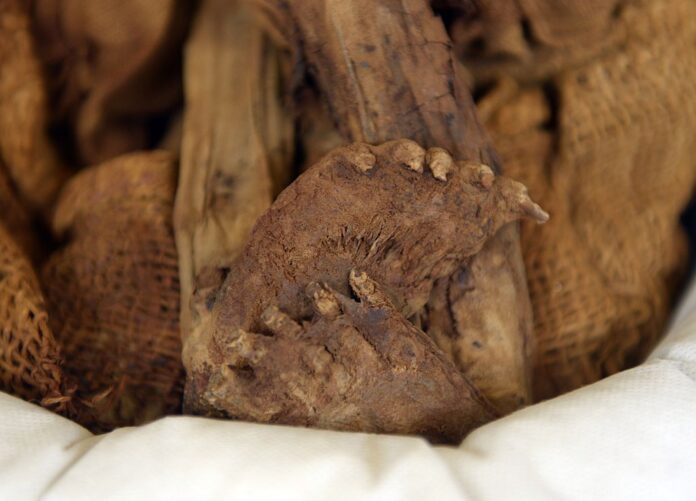A new study identifies a noble infant, who was left in an unmarked coffin within a family crypt.
A “virtual autopsy” has put a name to a 17th-century mummified child from an aristocratic Austrian family crypt.
New research published in Frontiers of Medicine on Tuesday explains how a german team led by Dr. Andreas Nerlich of the Academic Clinic Munich-Bogenhausen used CT scans, family records, radiocarbon testing, and other burial clues, to discover the identity of young Reichard Wilhelm.
The burial space was designated for the Counts of Starhemberg — a politically powerful Austrian family with some members reaching princely ranks by 1765. Wilhelm was wrapped in an expensive silk coat in an unmarked wooden coffin, in heavy contrast to the others in the crypt who were laid to rest in elaborate metal caskets, and he was the only unidentified crypt resident.
He was naturally preserved through the crypt conditions and had plenty of soft tissue intact for Nerlich’s team to investigate. Measuring bone lengths and tooth eruptions, Reichard Wilhelm is estimated to have been one year old at his death.
“We have no data on the fate of other infants of the family. According to our data, the infant was most probably [the count’s] first-born son after erection of the family crypt, so special care may have been applied,” said Nerlich in a press release.
The remains told an interesting story, demonstrating that money and status couldn’t protect a family from high infant mortality rates. Soft tissue analysis showed that little Wilhelm was overweight yet still malnourished. His ribs were malformed in ways that indicate scurvy or severe rickets. Additionally, his lungs were inflamed, leading the researchers to believe he may have had pneumonia.
“The combination of obesity along with a severe vitamin-deficiency can only be explained by a generally ‘good’ nutritional status along with an almost complete lack of sunlight exposure,” said Nerlich.
Historical data shows that the young noble was buried around 1600 CE, and using radiocarbon dating on a sample of Wilhelms’ skin, Nerlich’s team discovered that he was entombed between 1550–1635 CE. The infant was buried next to his grandfather, Reichard von Starhemberg.
The family’s status and Wilhelm’s disease traits give researchers more insight into the hardships of child-rearing in the past — along with plenty of questions.
“We have to reconsider the living conditions of high aristocratic infants of previous populations,” explained Nerlich.
Source: Court House News

